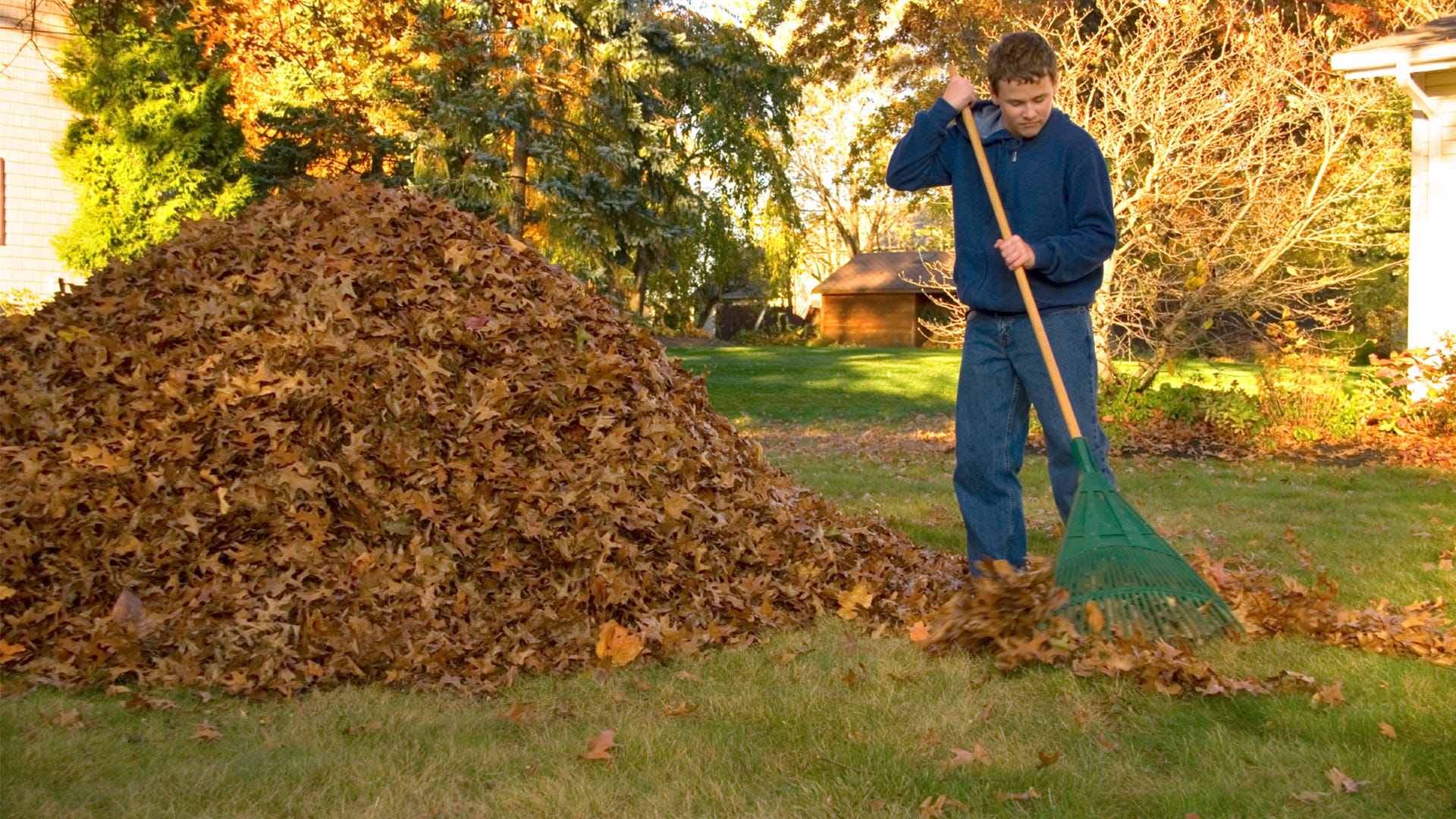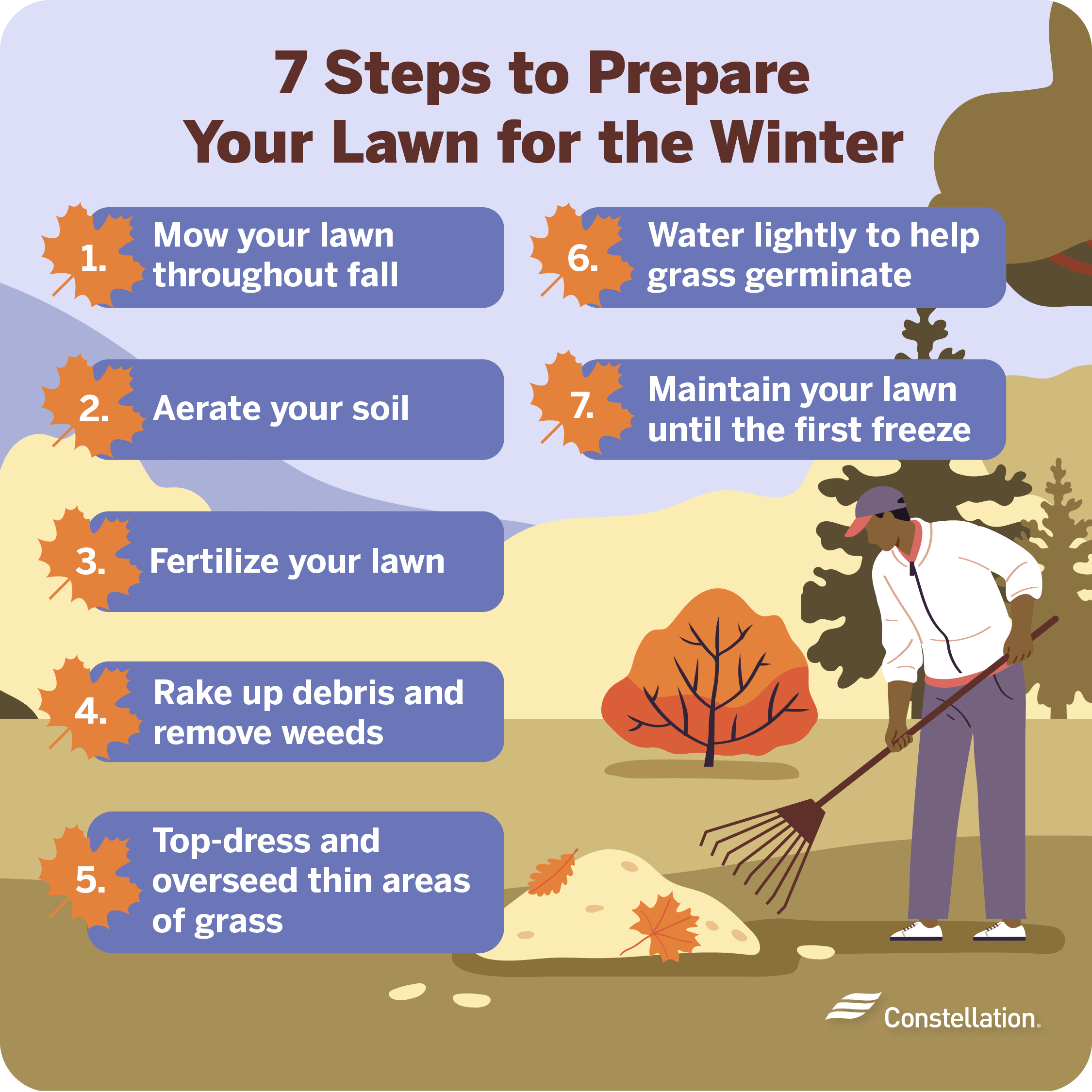Winter is coming, and your lawn needs special care. Preparing your lawn for winter ensures it stays healthy. Follow these simple steps to get your lawn ready.

Credit: www.saferbrand.com
Step 1: Clean Up Your Lawn
Remove fallen leaves and debris. Dead leaves can smother your grass. Rake up leaves regularly to keep your lawn clean. Also, remove any sticks or branches.
Why Clean Up Is Important
Cleaning prevents diseases. It also helps sunlight reach your grass. A clean lawn breathes better and stays healthy.
Step 2: Mow Your Lawn
Keep your grass short before winter. Mow your lawn one last time. Set your mower to a lower setting. Short grass prevents mold growth.
How Short Should The Grass Be?
Cut the grass to about 2 inches. This height is perfect for winter. It helps the grass survive the cold months.
Step 3: Aerate Your Lawn
Aeration helps your lawn breathe. Use a lawn aerator to poke small holes in the soil. This allows air, water, and nutrients to reach the roots.
Benefits Of Aeration
Aeration reduces soil compaction. It helps the roots grow deep and strong. This makes your lawn healthier and more resilient.
Step 4: Fertilize Your Lawn
Use a winter fertilizer for your lawn. Choose a fertilizer rich in potassium. Potassium strengthens the grass for winter.
When To Fertilize
Apply the fertilizer in late fall. This gives the grass time to absorb the nutrients. Your lawn will be ready for winter.
Step 5: Water Your Lawn
Water your lawn deeply before winter. This ensures the roots are well-hydrated. A well-watered lawn is less likely to dry out during winter.
How Much Water?
Water your lawn until the soil is moist. Do not overwater. The soil should be damp but not soggy.
Step 6: Apply Mulch
Mulch helps protect your lawn. It acts as a blanket for the soil. Apply mulch around trees and shrubs. This keeps the roots warm.
Types Of Mulch
- Organic Mulch: Made of leaves, straw, or wood chips.
- Inorganic Mulch: Made of stones or plastic.
Choose the type that suits your lawn best.

Credit: blog.constellation.com
Step 7: Protect Delicate Plants
Cover delicate plants with burlap or cloth. This protects them from frost. You can also use plant covers or cloches.
Why Protection Is Necessary
Frost can damage delicate plants. Covering them ensures they survive winter. In spring, they will bloom beautifully.
Step 8: Reduce Foot Traffic
Limit walking on your lawn during winter. Heavy foot traffic can damage the grass. Use pathways to avoid stepping on the lawn.
Why Foot Traffic Hurts
Walking compacts the soil. Compacted soil restricts root growth. This can weaken your lawn.
Step 9: Check for Pests
Inspect your lawn for pests before winter. Look for signs of grubs or other insects. Treat any pest problems immediately.
How To Treat Pests
- Use natural pest control methods.
- Apply pesticides if necessary.
- Consult a professional for severe infestations.
Step 10: Store Lawn Equipment
Clean and store your lawn equipment. Drain fuel from mowers and trimmers. Store them in a dry place. This keeps your tools in good condition.
Why Storage Matters
Proper storage extends the life of your equipment. It prevents rust and damage. Your tools will be ready for use in spring.
Winter Lawn Care Tips
Here are some extra tips to keep your lawn healthy during winter.
- Avoid using salt on your lawn. Use sand or kitty litter for ice.
- Keep your lawn free of heavy objects. Move furniture and toys off the grass.
- Check your lawn regularly for signs of stress. Address any issues promptly.
Frequently Asked Questions
What Should I Do Before Winter?
Clean up leaves, aerate soil, and fertilize.
How Often Should I Water My Lawn?
Water once a week until the ground freezes.
Can I Mow My Lawn In Winter?
Mow until grass stops growing, usually late fall.
Should I Fertilize My Lawn In Fall?
Yes, apply a winter-specific fertilizer in fall.
Conclusion
Preparing your lawn for winter is easy. Follow these steps to ensure a healthy lawn. Your grass will thank you in spring. Happy lawn care!
